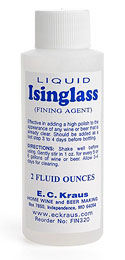 In several earlier posts, we introduced a few home winemaking terms that you may or may not be familiar with. There are many terms to learn in home winemaking, and this post, like all the previous posts, gives you a short introduction to a few of those terms to help you get started in home winemaking, or perhaps brush up on some of the terms you may not have seen in a while.
In several earlier posts, we introduced a few home winemaking terms that you may or may not be familiar with. There are many terms to learn in home winemaking, and this post, like all the previous posts, gives you a short introduction to a few of those terms to help you get started in home winemaking, or perhaps brush up on some of the terms you may not have seen in a while.
- Isinglass: Isinglass is a commonly used fining agent in winemaking, and originates from gelatin isolated from fish. As long as you aren’t trying to make vegan wine, Isinglass is an animal protein-based clarifier that has been used over and over again in the wine industry, both in commercial and home winemaking settings. It is argued by many winemakers to have a more gentle effect on the color of your wine, thus ideal for white or lightly colored rosé wines.
- Beaujolais: Beaujolais is a wine making region in France located south of Burgundy. Wines made in this region are referred to as “Beaujolais”, and not referred to by the grapes that make up the blend (as is the case in all of France and other parts of Europe). Even though this name refers to a region in France, you can still create your own Beaujolais-style wine in your very own home, no matter where you are in the world. Beaujolais wines tend to be fresh and fruity wines, made up primarily of the Gamay grape. Thus, a Beaujolais-style wine would be something made in a very similar manner.
- Jammy: Though you sometimes think of jam when you imagine a ripe, plump grape, that’s not what we’re going for with this winemaking term. “Jammy” is a sensory quality or taste of a wine that is reminiscent of baked, cooked, or stewed fruit. You tend to run into “jammy” wines in regions where the climate is much too warm for the particular grape variety that is being grown. “Jammy” is typically a negative tasting term, though in all honesty, if you like your wines “Jammy”, then make them as “Jammy” as you darn well please and enjoy it!
- MW: Why do some people have an MW after their names? Well, just like M.A., M.S., M.D., J.D., or Ph.D., etc, M.W. stands for someone who has successfully completed a particular educational program and the rigorous tests required of them. In this case, MW stands for “Master of Wine”. It is an extremely difficult qualification to attain, and is only held by a few hundred people throughout the entire world. If you see MW after someone’s name, it indicates they know nearly everything there is to know about wine, and passed the insanely difficult tests to prove it.
———————————————————————————————————
Ed Kraus is a 3rd generation home brewer/winemaker and has been an owner of E. C. Kraus since 1999. He has been helping individuals make better wine and beer for over 25 years.

 Hi there, folks! Leigh here!
Hi there, folks! Leigh here! My name is Leigh Erwin, and I am a brand-spankin’ new home winemaker! E. C. Kraus has asked me to share with you my journey from a first-time dabbler to an accomplished home winemaker. From time to time I’ll be checking in with this blog and reporting my experience with you: the good, bad — and the ugly.
My name is Leigh Erwin, and I am a brand-spankin’ new home winemaker! E. C. Kraus has asked me to share with you my journey from a first-time dabbler to an accomplished home winemaker. From time to time I’ll be checking in with this blog and reporting my experience with you: the good, bad — and the ugly.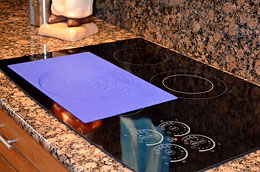 It’s been about 14 months since I started making wine (one of the best hobbies ever!). In that time I made about 70 gallons or a little over 360 bottles. And saved a lot of money too!
It’s been about 14 months since I started making wine (one of the best hobbies ever!). In that time I made about 70 gallons or a little over 360 bottles. And saved a lot of money too! At long last, barbeque season is upon us! The perfect homebrewing accompaniment? Rauchbier!
At long last, barbeque season is upon us! The perfect homebrewing accompaniment? Rauchbier!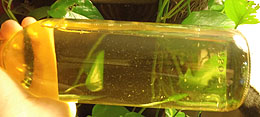 Hi Everyone! I hope you all are staying safe and warm with all this ridiculously cold arctic air that’s been hanging around much of the continental US this winter! All these cold temperatures got me thinking about how you all were handling the extremes in your home, and in particular pertaining to your fermentations and wine storage. Thankfully, we never lost electricity for any reason (not yet anyway), and we have a pretty decent heating system, so my little fermentation is still just happily going along just fine in lower 70s!
Hi Everyone! I hope you all are staying safe and warm with all this ridiculously cold arctic air that’s been hanging around much of the continental US this winter! All these cold temperatures got me thinking about how you all were handling the extremes in your home, and in particular pertaining to your fermentations and wine storage. Thankfully, we never lost electricity for any reason (not yet anyway), and we have a pretty decent heating system, so my little fermentation is still just happily going along just fine in lower 70s!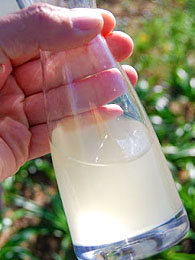 I typically make really high octane wine. I mean I like to make wines that are just short of whiskey. (Because not allowed to distill). But, when trying a new one I ran into a interesting problem. This particular one mostly water and sugar (trying for more of a vodka style) but it doesn’t seem to want to ferment at all. Never had one not ferment at all before. Go bad yes but not at all…. even tried a different yeast in case I killed the first one but still nothing?
I typically make really high octane wine. I mean I like to make wines that are just short of whiskey. (Because not allowed to distill). But, when trying a new one I ran into a interesting problem. This particular one mostly water and sugar (trying for more of a vodka style) but it doesn’t seem to want to ferment at all. Never had one not ferment at all before. Go bad yes but not at all…. even tried a different yeast in case I killed the first one but still nothing? Today’s beer recipe comes from a
Today’s beer recipe comes from a  Hi everyone! I just finished the first phase of my new batch of homemade wine made from a
Hi everyone! I just finished the first phase of my new batch of homemade wine made from a 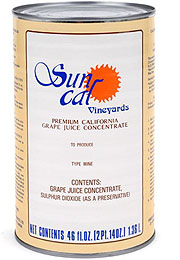
 Whether you just started beer brewing or have been making beer at home for years, we all need some inspiration from time to time. Luckily, many professional brewers are very open about sharing their passion for beer brewing and even go as far as to share their insights online.
Whether you just started beer brewing or have been making beer at home for years, we all need some inspiration from time to time. Luckily, many professional brewers are very open about sharing their passion for beer brewing and even go as far as to share their insights online. Homebrewing can be such a personal hobby. After all, we spend time researching, preparing and making the beer we love so much.
Homebrewing can be such a personal hobby. After all, we spend time researching, preparing and making the beer we love so much.